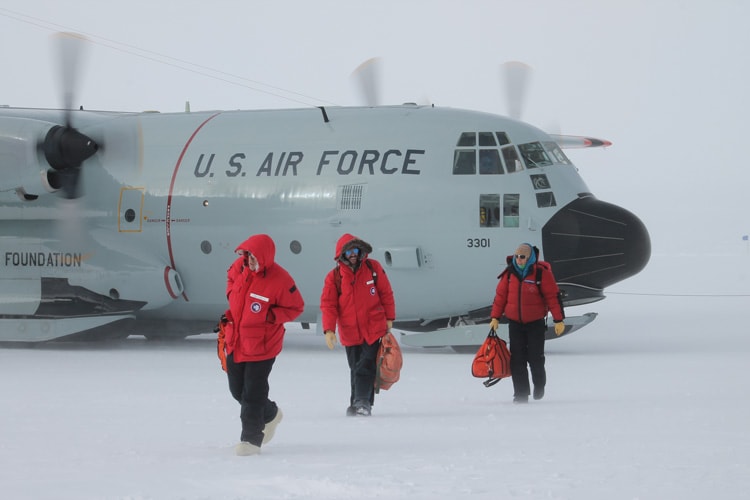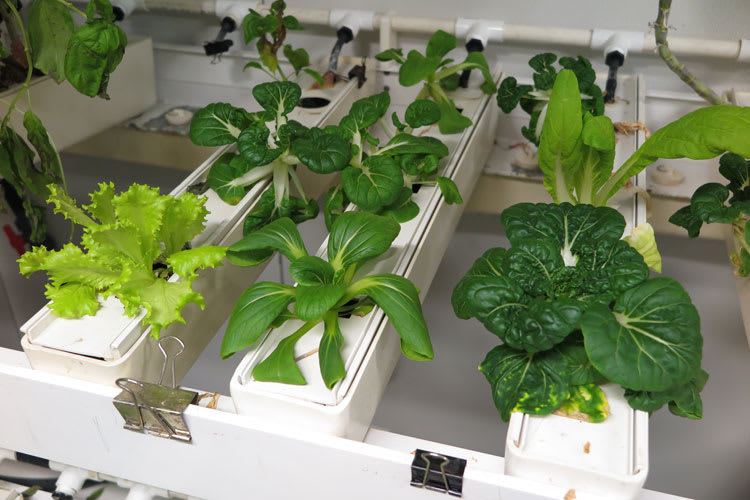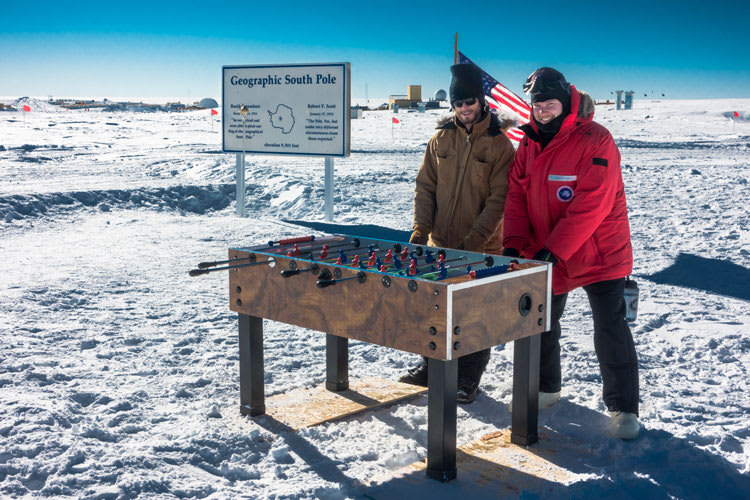It’s a place like no other in the world. At the center of the Antarctic continent, the South Pole is a barren desert of snow. It boasts some of the lowest temperatures in the world, and the Amundsen-Scott South Pole Station is an oasis of life surrounded by miles of ice.
Although the conditions may be harsh and unwelcoming, the daily life of someone at the South Pole station is exciting and interesting. During construction, over 100 IceCube personnel were sent to the station each year, and here is a little taste of what their experience was like.
Traveling to the Pole
Before you are allowed to depart for the South Pole, you have to undergo a physical examination to make sure you are healthy enough to travel and handle the conditions. There are doctors at the Pole, but because of the time it takes to fly in and out, treating serious medical conditions can be difficult.

Getting to the South Pole requires a lot of time in the air. Travel from the Northern Hemisphere typically takes 72 hours or more. Your first flight would be on a commercial airline into Auckland, New Zealand. From Auckland you fly to Christchurch, New Zealand, where you would be fitted for extreme cold weather gear. Everyone headed to Antarctica is issued special clothing to protect against the cold, including a parka, mittens, boots, and more.
After you pick up your gear, your flight out of Christchurch is on a military transport plane—a Boeing C-17—to McMurdo, a U.S. station on the Antarctic coast. McMurdo Station could be considered a large city in Antarctic terms, whereas the South Pole is more of a small town. You stay at McMurdo until you can catch a flight to the South Pole on a ski-equipped Lockheed LC-130 Hercules.
No matter how many times someone has traveled to the South Pole, getting off the plane is always exciting. And, usually, it’s very bright. All that snow and sun make for some intense light. Once your eyes adjust, you’ll see a group of people waiting to welcome the flight, and beyond that, the South Pole station
The South Pole Station
The South Pole station houses approximately 150 people. It has an industrial kitchen, dining room, gym, greenhouse, and more.

The station is at an altitude of close to 10,000 feet, so incoming travelers need to acclimate to the thin air and lower air pressure. Our bodies have two main problems with high altitude and the corresponding lower air pressure: (1) Air at lower pressure has less oxygen per lungful. Your body adjusts by producing more red blood cells to carry oxygen more efficiently. Most of this cell building happens while you sleep; however, the process can take days, and in the meanwhile, you may be ill. (2) At lower air pressure, water evaporates faster. There is little precipitation at the South Pole, making it the world’s largest desert. It is critical to keep hydrated.
Fresh water is obtained using a hot water hose. The hose is driven into an ice cavern to melt a bowl into the ice. The melted water is then siphoned out for drinking and other uses. When the melted area becomes too low for the hose to reach, the hose is moved to create a new hole.
For recreation, people form clubs, start bands, and attend classes and events that reflect their interests—from learning about the other projects going on at the station to practicing Scottish dance!
There are always things to do at the South Pole for recreation. In fact, it often seems like there’s too much to do and too little time. There is a gym with a weight room, volleyball, basketball, music, and classes, in addition to work. During the summer there are science lectures every week, so you can hear different researchers talk about their various projects; subjects tend to focus around astronomy and atmospheric studies. The season starts slowly, but when people begin sharing their talents, it’s easy to become overscheduled as the short season progresses.

All supplies must be flown in to the South Pole. There is a small greenhouse to help supplement the food supply. In past seasons, about a third of incoming flights transported fuel, the remainder brought people and cargo. Boxed-up trash is carried out on return flights and flown to McMurdo Station, where it is loaded onto the cargo boats to be returned to the United States.
Thawing food at the South Pole can take several hours to a week. Ice cream needs to be removed from storage several hours ahead of time to thaw or you would need to serve it with a hacksaw!
During winter at the South Pole, a skeleton crew, called winterovers, remain to maintain the station. The sun sets in February and doesn’t rise again until November. It is very difficult to get anything in or out of the South Pole during these months. The average temperature is so low that most aircrafts cannot land. The hydraulics on the skis are rated to only -50°C (-58°F) and could fail at lower temperatures.
Time at the South Pole is aligned with McMurdo Station, which is aligned with New Zealand.
Working at the South Pole changes your perspective on the world. It is starkly beautiful. The weather and atmospheric effects are primary motivations for the scientific research conducted here. Temperatures are always below freezing, and average monthly temperatures during the winter are around -60°C (-76°F).
